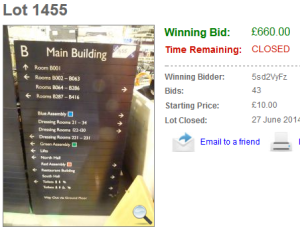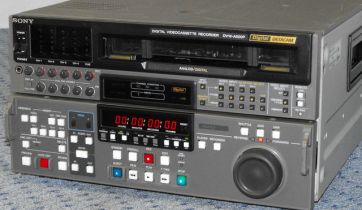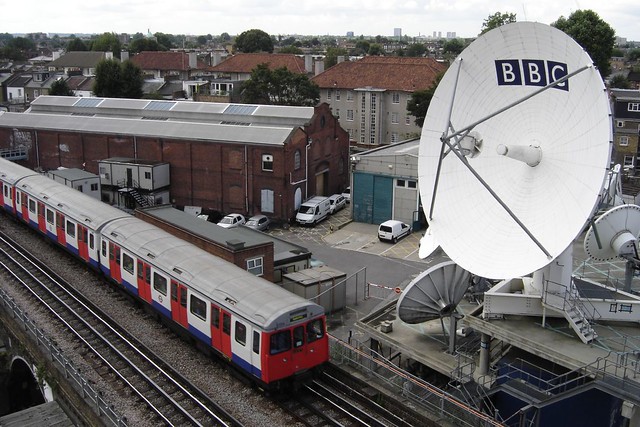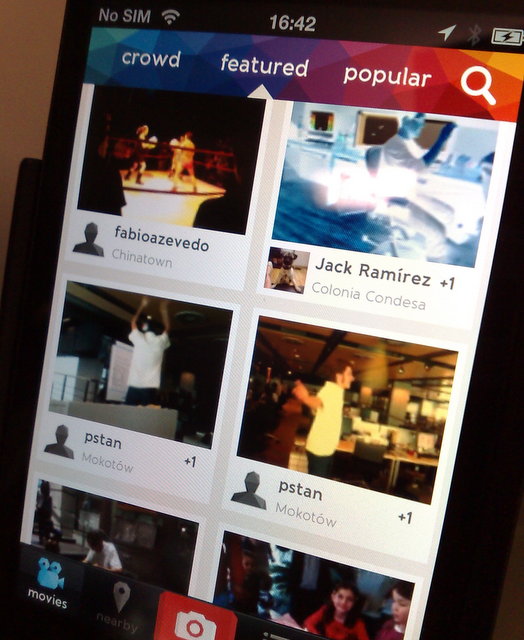Archive for the ‘Business’ Category
Travel offpeak in London? 2.5% fare increase? Double it, then double it again. Still not close.
Off-peak – not a thing anymore
Welcome to 2015!
I don’t normally write about topics which appear everywhere else in the mainstream news, but here’s something that I can’t understand isn’t a bigger story, judging by the comments I’ve seen online today.
The news in London, and across much of England is that with today being the first work day of the year for many, it now it costs on average 2.5% more for the train or bus to work.
Here’s the headline you haven’t seen:
Price of off-peak travel in London leaps 38%
You read that correctly. If you, like many, like the cost-saving and lack of crush of travelling after 0930, then you just got what must be the largest fare increase in the country.
In 2014 an offpeak travelcard for zones 1-6 cost: £8.90
In 2015 an offpeak travelcard for zones 1-6 is now £12.00, a rise of 34.8%.
There are some other interesting changes.
The Anytime Travelcard is now also £12 for zones 1-4. There seems to be no incentive at all to travel offpeak anymore with this type of ticket. Live further out? Your fare jumps another 40% higher:
Buy a travelcard at 8am in Oakleigh Park – £12. Buy it at New Barnet about a mile further up the road, and you’ll pay £17. My advice, walk the mile! (Does TFL have a secret pact with the NHS to encourage pedestrians?)
Price capping
It gets even more interesting when you look at what’s happened to the price caps. This is the maximum possible you will pay in a day if you use an Oyster card, or a contactless payment card.
In 2014 the offpeak price cap for zones 1-6 was: £8.50
In 2015 the offpeak price cap for zones 1-6 is : £11.70, an increase of 38%
And in these zones, TFL have effectively abolished offpeak fares. The peak and the offpeak caps are the same.
Where this does make a difference is outside zone 6. Let’s stay with north London for a price example:
Use Oyster at Enfield Lock at 8am on a weekday and you won’t pay more than £11.70 for the entire day. Do the same at Waltham Cross, again about a mile further away and you will pay a whopping 70% more! The peak cap in zone 7 is £20.
Now let’s compare last year’s peaktime price caps, because in 2014, there was a significant premium for travelling with the herd.
In 2014 the peak price cap for zones 1-2 was: £8.40. It’s now £6.40, a fall of 23%.
In 2014 the peak price cap for zones 1-3 was: £10.60. It’s now £7.50, a fall of 29%.
In 2014 the peak price cap for zones 1-4 was: £10.60. It’s now £9.20, a fall of 13%.
In 2014 the peak price cap for zones 1-6 was: £15.80. It’s now £11.70, a fall of 26%.
It seems if you live in zones 4 or 5, you’re not seeing your fair share of reduction, and those living in zone 1 (possibly those who can afford high prices the most) also see a significant reduction.
Silver lining
There’s one upside however, if you’re not travelling through zone 1. The price of a single between zones 2-6 is still £1.50. After 0930 you can travel from Hammersmith to Heathrow, or from Mile End all the way to Epping for just £1.50. That’s a bargain, a weird sort of bargain, but a bargain nonetheless.
Getting rid of paper
For the last few years, we’ve had a significant additional cost to buying a single paper ticket with cash, now that’s grown to day travelcards as well, with the cost of the paper travelcard being well above the price caps, both peak and off peak. Here’s an expensive example:
Travelling from Sidcup in SE London before 0930 an Anytime travelcard is £17, but the peak price cap is £10.90 so you’ll pay 55% more for that paper ticket.
I can see how the cost of dealing with paper tickets must have increased proportionally as usage of them has dropped. After all, they still need to keep all the gates taking paper, and offices and machines issuing them. But has the dropoff in the use of paper tickets in the last few years really brought us to the point where the cost is 55% more?
And with 2015’s fare regime it looks like off-peak travellers are being massively penalised. And penalised for what exactly? For waiting a bit longer, thus allowing more space for people who don’t have a choice about when to travel?
There isn’t a financial incentive any more if you live within zones 1-4. Just crush onto the trains with everyone else, because with the price-caps the same, you’re not going to pay any more than they are.
By travelling off-peak in 2015 you’re now paying more, not less. While those travelling at peak times can pay less, not more. That’s a strategy I don’t understand.
If you do understand … or you have a sensible comment, let me know.
The sale of stuff from TV Centre – Valuable? Or Junk?
 Useless things – worth more than they cost to make
Useless things – worth more than they cost to make
The contents of a building where I used to work are being slowly sold off.
The closure and sale of BBC Television Centre has ignited strong emotions and there was a protest to prevent planning permission for a redevelopment, involving some high-profile celebrities of British culture, to no avail.
As an armchair economist it’s fascinating to pick out a couple of results of some of the completed parts of the auction, because for me at least, the prices just don’t make any sense.
Take for example, lots 1455, and 1456. These are what’s left of some of the interior signs.
They sold for a combined total of over £1,000!
I’m amazed, particularly as there’s not much about these which is scarce. The BBC still occupies three buildings across the road from TV Centre – I’m in one of them most weeks – and there’s still a machine that makes these signs and labels. If they’re worth this much money, someone should be running that machine night and day cranking more of them out!
How about lot 1444:
£55 for a door to nowhere, and you could surely make this for half that price with bits from a DIY shop. With this piece though, I can understand more why it is valued highly
It would be interesting to know the history of this door. It’s possible it was originally made for radio drama and came over to Wood Lane if it was needed to re-dub sound effects for TV. Or it could have a longer heritage and started life in a film dubbing suite, maybe in Ealing, or in Lime Grove. It could however just as easily been knocked up in 20 mins by a TV Centre carpenter in the 1980s.
It’s clearly the possibilities of this history, and the unusualness of the item which make it worth more.
Time for a reality check though. TV Centre was also full of functioning valuable equipment. Great for radio stations, universities, or small TV / film companies. Let’s take a look at the going rate for something still being used, like a professional digital videotape recorder.
New, they are sold for thousands. Even second-hand, you’ll get hundreds for them. There were many like these for sale in TV Centre’s auction. Here’s lot 1505.
I think ‘thetoplens’ got a bargain there!
The sale of stuff from TV Centre isn’t over yet! Two more auctions are scheduled, more equipment here, and you can still buy the satellite dishes and comms equipment. Although being unmaintained and exposed to the elements for well over two years, I’m not sure how much operational value there’s left in them. Plus for a domestic bidder in need of a new birdbath, you’re going to need a very large garden, and probably planning permission!
flickr / peterdaniel
Let me know in the comments if you got a bargain, or whether you consider you got something valuable, no matter what you paid.
Skype to make group video chat free
Not so exclusive anymore.
If you’re one of the people who got a free year’s subscription to Skype Premium as part of the Christmas collaboration offer, and are congratulating yourself for saving over $100, then hold on! It might not be as great a deal as you think.
Skype are about to make some big changes.
First the ‘Collaboration Premium’ freebie doesn’t include any free phone calls to real phones (one of the main parts of Skype Premium), the other important part, group video calls is about to be offered free to everyone anyway.
Skype is also ditching both the 12-month subscription offer (with its 50% discount) and the 3 month version.
Here’s part of the email reply I got from Skype when I enquired where the 12 month option had gone.
The reason behind these changes is that Skype will soon include Group Video Calling for free for those users who will link their Skype Accounts with MSA [Microsoft account]
I’m guessing this means if you have a hotmail, outlook or live.com email address.
So, if you’re about to buy or renew your Premium account, might be worth waiting to see if you can do with just Skype Credit (which is 30% off at the time of writing if you buy a git card)
Blackberry – still stumbling over presentation
Trips up, gets up, trips up again
Blackberry 10 launches today, and their UK managing director, Stephen Bates was on 5live Breakfast to talk about it.
(Also on 5live’s own site here)
A less than triumphant performance.
Stephen Bates’ problem here was perhaps that he didn’t acknowledge the question. All he needed to do was to agree with the interviewer something like this:
“Yes, each phone manufacturer has their strengths and they learn off each other and they particularly learn what it is the consumer wants. And what Blackberry has learned about the consumer is ….”
And annoyingly it wasn’t even his first interview of the day, an hour earlier, he was in the BBC1 Breakfast studio, with something very similar.
Blackberry have form when it comes to reacting badly to unexpected questions. Remember this famous interview with (at that point, but not shortly afterwards) Chief Executive, Mike Lazaridis?
http://news.bbc.co.uk/1/hi/programmes/click_online/9456798.stm
The Tower lives and grows
Transmit til it megahertz, 47 years and counting.
It is such an iconic part of the London skyline, central to telecoms, and in particular television development in the UK.
I have a soft spot for the BT Tower / Post Office Tower. I gaze up at it. I watch it. I take photos of it.
When the antenna galleries were stripped of all the original (and subsequently added) microwave aerials at the end of 2011, I wasn’t the only one worried we were at the end of an era for the Tower.
In an era before fibre optics and before satellite transmission really got going, you moved signals across the country in point-to-point hops from one transceiver to the next, and the Tower was the centre of the network.
But I’m pleased to report a small return to form. The picture on the left I took in mid April 2012. The picture on the right was taken on 2 May 2012.
Spot the difference (apart from the weather) There’s a new white microwave antenna – the tower is beaming long-distance signals again! 47 years on, it still performing its original purpose.
Interestingly, the new dish isn’t located in the traditional gallery, but much further up the tower which means it probably has a range of around 25-30 miles depending on the power output. It’s facing west, which takes it out to about Slough.
The diameter is about 2 meters, so a significant sized dish.
It’s highly likely that this link is being used by a company other than BT, but if you know any details, let us know in the comments.









